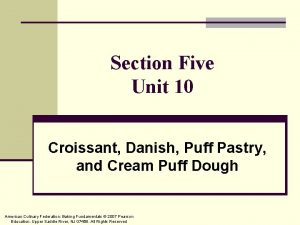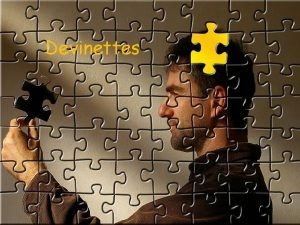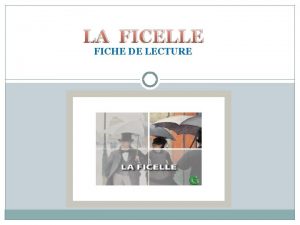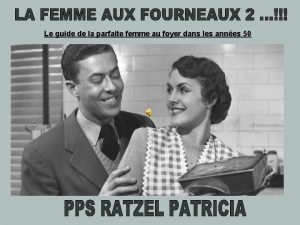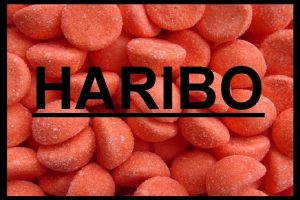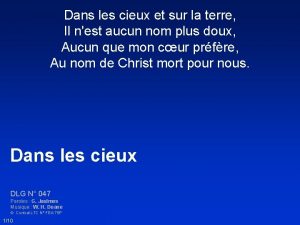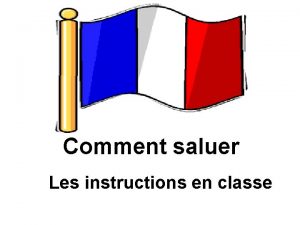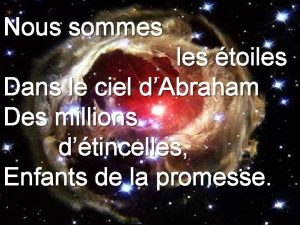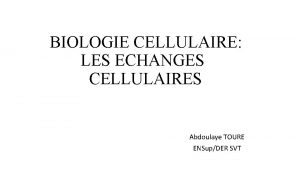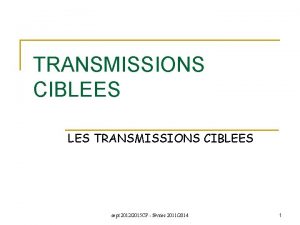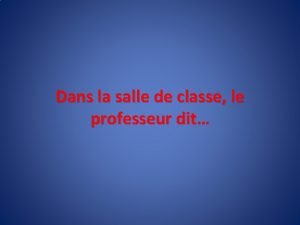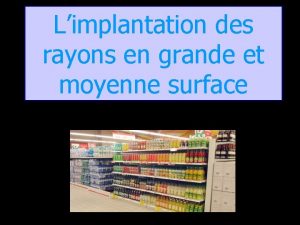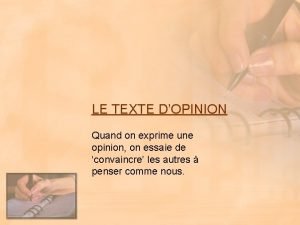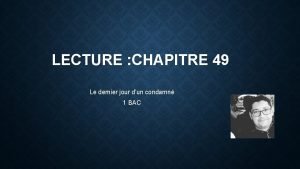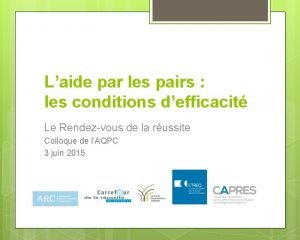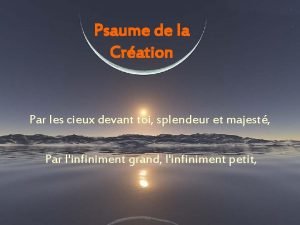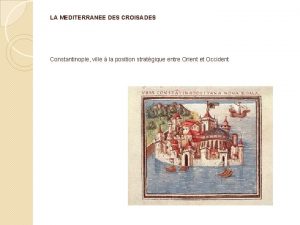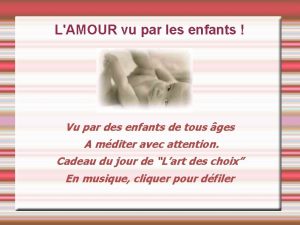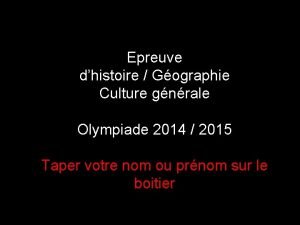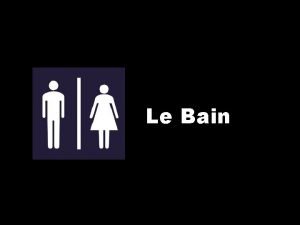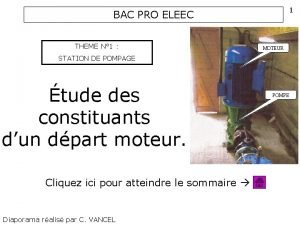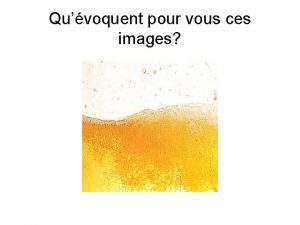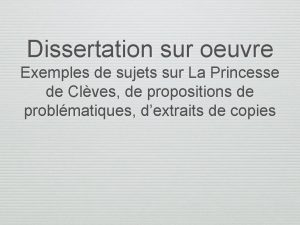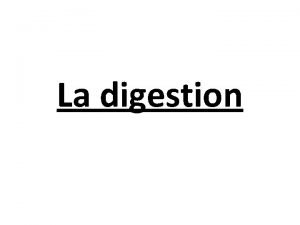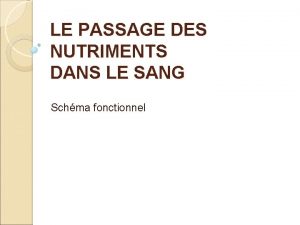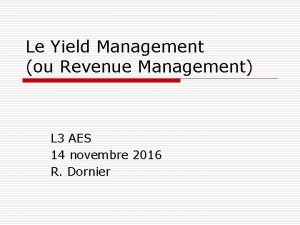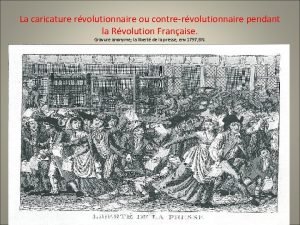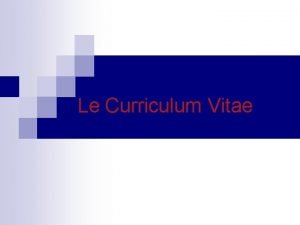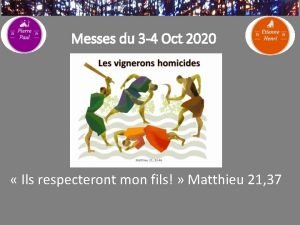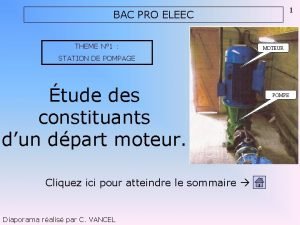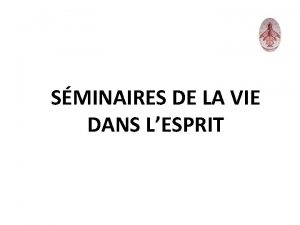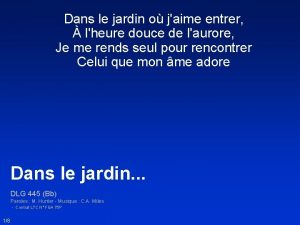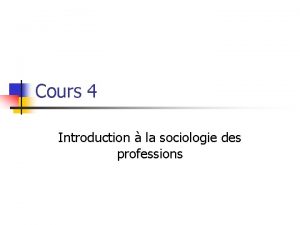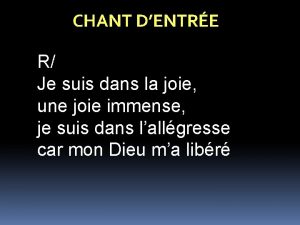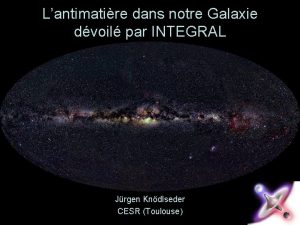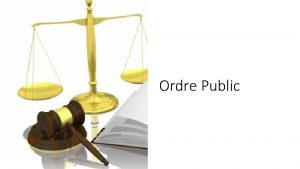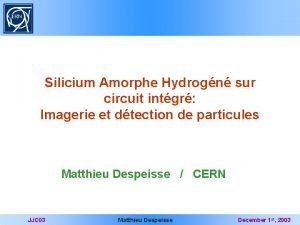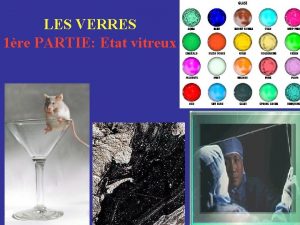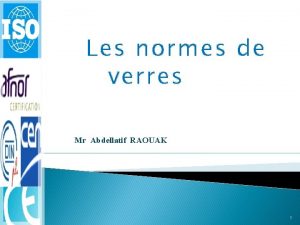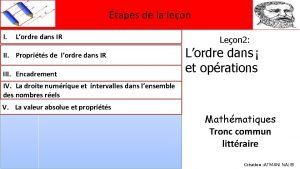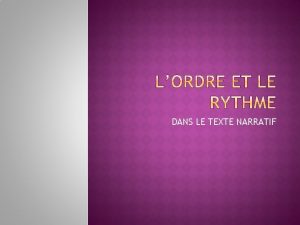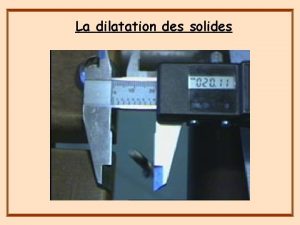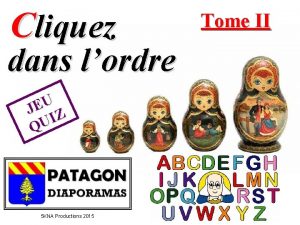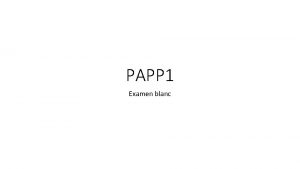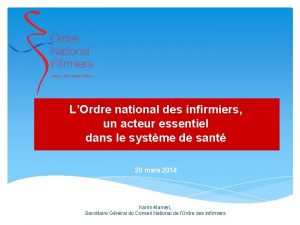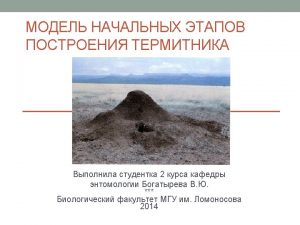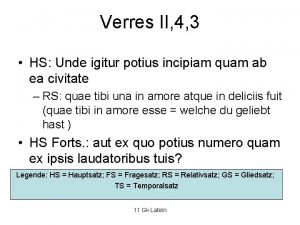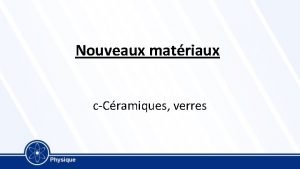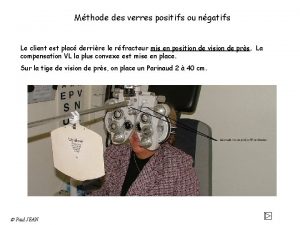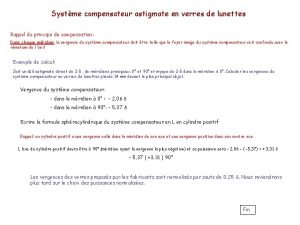Lordre amorphe dans les verres dvoil par les



![S(q) [a. u. ] Criticality ? Nothing is obvious …! Polybutadiene, Tg 180 K S(q) [a. u. ] Criticality ? Nothing is obvious …! Polybutadiene, Tg 180 K](https://slidetodoc.com/presentation_image_h/76747e64f2f9f79f553b5045ca98db83/image-4.jpg)



![Bouchaud-Biroli’s prediction [PRB, (2005)] for c 3 at any frequency: If Ncorr~ Ldf is Bouchaud-Biroli’s prediction [PRB, (2005)] for c 3 at any frequency: If Ncorr~ Ldf is](https://slidetodoc.com/presentation_image_h/76747e64f2f9f79f553b5045ca98db83/image-8.jpg)




























![Aging of X 3(3) [Brun et al PRL (2012)] Tinitial Tg Aging: observables depend Aging of X 3(3) [Brun et al PRL (2012)] Tinitial Tg Aging: observables depend](https://slidetodoc.com/presentation_image_h/76747e64f2f9f79f553b5045ca98db83/image-37.jpg)







![An idea of G. Johari (JCP (2013)) for X 2, 1(1) ( Est+Eaccos[wt]). An idea of G. Johari (JCP (2013)) for X 2, 1(1) ( Est+Eaccos[wt]).](https://slidetodoc.com/presentation_image_h/76747e64f2f9f79f553b5045ca98db83/image-45.jpg)










- Slides: 55

L’ordre amorphe dans les verres dévoilé par les réponses non linéaires. Started the 11/09/2004 thanks to: G. Biroli (CEA/IPh. T-ENS), J. -P. Bouchaud (CFM) Since then: CEA/SPEC: D. L’Hôte, R. Tourbot, F. L. + C. Crauste, C. Brun, S. Albert, P. Gadige Augsburg Univ. : P. Lunkenheimer, A. Loidl + Th. Bauer, M. Michl Perpignan Univ. : P. M. Déjardin Albert et al. Science (2016). For a review see "Nonlinear Dielectric Spectroscopy" Springer series Ar. Xiv : 1807. 03984

Glasses : the simplest experiment… http: //en. wikipedia. org/wiki/Pitch_drop_experiment Bitumen : A hammer breaks it… And yet … it flows !!!. . . Since 1927: 9 drops !!! The physicist who started this experiment deceased after 2 drops … Glasses would be both solid AND liquid. There are long time scales

Glasses: two key observables (ta and Sc) Sc(T)=S(T)-Scryst(T) α Glass (out Supercooled liquid of Eq. ) W. Kauzmann (1948) Liquid (Crystal) =100 s ~10 -12 s T 0 Tg Tm T Supercooled dynamics is (would be? ) related to thermodynamics : ←Adam Gibbs (1965) + other (semi)-universal features… Would there be an underlying critical point driving the glass transition ?
![Sq a u Criticality Nothing is obvious Polybutadiene Tg 180 K S(q) [a. u. ] Criticality ? Nothing is obvious …! Polybutadiene, Tg 180 K](https://slidetodoc.com/presentation_image_h/76747e64f2f9f79f553b5045ca98db83/image-4.jpg)
S(q) [a. u. ] Criticality ? Nothing is obvious …! Polybutadiene, Tg 180 K Hurley, Harowell, PRE, 52, 1694, (1995) Ncorr The glass looks like the liquid Dynamical Heterogeneities (DH) Theories: Kinetic theories: Thermodynamic theories: RFOT (Wolynes etc…) : Amorphous order Kinetically Constrained Models (Garrahan, Chandler, et al…): Trivial thermo. , Frustration (Tarjus, Kivelson, etc…) : locally only kinetic rules matter. prefered structure Glasses ultra viscous liquids at any T Glasses driven by a thermo. critical point Can we test the existence of a thermodynamic critical point (Ncorr at low T) ?

I) Outline: Why measuring c 3 and c 5 in glasses. • A long story • Dimensional analysis • Bouchaud Biroli’s predictions II) Orders of magnitude. • Definition of c 3 and c 5 • Worst case analysis III) Results & interpretations. • w and T behavior of c 3 and c 5 • Discussion. Summary and Perspectives.

3 rd and 5 th order responses in glasses: a long story P = c 1 E + c 3 E 3+ c 5 E 5 +… contrarily to c 1, c 3 (and c 5 …) are predicted to reveal collective effects in glasses Tests of predictions Spin glasses Cu: Mn (1% at. ), Levy PRL (1986) Molecular glasses Glycerol, Crauste, PRL (2010) Colloïdal glasses PNIPAM, Seybolt, Soft Mat. (2016) c 3 (a. u. ) Frequency (Hz) Frozen disorder ? YES Detailed balance ? YES Frequency (Hz) Frozen disorder ? NO Detailed balance ? YES Frequency (a. u. ) Frozen disorder ? NO Detailed balance ? NO Even though these 3 glasses are different: anomalous features in c 3 reveal Lglassy

The interest of X 3 and X 5 in a nutshell: a dimensional analysis Thermodynamics of independent dipoles: Independent « paquets » of Ncorr Ld dipoles Amorphous ordering phase transition : L ----- k=5 ----- k=3 ----- k=1 (linear resp. ) 1 0 1 The higher the order k ≥ 3, the stronger the divergence in T. If thermod. amorphous ordering: c 1 is blind to it, contrarily to c 3, c 5…
![BouchaudBirolis prediction PRB 2005 for c 3 at any frequency If Ncorr Ldf is Bouchaud-Biroli’s prediction [PRB, (2005)] for c 3 at any frequency: If Ncorr~ Ldf is](https://slidetodoc.com/presentation_image_h/76747e64f2f9f79f553b5045ca98db83/image-8.jpg)
Bouchaud-Biroli’s prediction [PRB, (2005)] for c 3 at any frequency: If Ncorr~ Ldf is large enough X 3, sing X 3 = X 3, sing+ X 3, trivial « 1 » w Because of Sc, the spin glass (increasing) plateau of X 3 becomes an (increasing) peak Generalizing to c 5: Albert et al. Science (2016) X 5, sing X 5 The higher the order k≥ 3, the more anomalous the w and T dependences. « 1 » w X 5 = X 5, sing+ X 5, trivial These predictions can be tested experimentally… 8

I) Outline: Why measuring c 3 and c 5 in glasses. • A long history • Dimensional analysis • Bouchaud Biroli’s predictions II) Orders of magnitude. • Definition of c 3 and c 5 • Worst case analysis III) Results & interpretations. • w and T behavior of c 3 and c 5 • Discussion. Summary and Perspectives.

Definitions of c 3 and of c 5: VS (t) e Supercooled liquid, controled T P For “low enough” E Safer to detect ck at the kth harmonics

Which sensitivity/field values are needed ? A worst case analysis Ideal gaz of dipoles: Measuring c 3 (or c 5) is (very) difficult Which frequency dependence ? [W. Coffey et al, P. R. I. A. (1978) and P. M. Déjardin (2016)] The Xn(k) are dimensionless N. B. : fa peak of c 1’’(w), as in supercooled liquids 0. 2 wta f/fa For an ideal gaz, |X 1|, |X 3| and |X 5 | have no hump in w do not depend on T Contrasts with BB close to Tg

I) Outline: Why measuring c 3 and c 5 in glasses. • A long history • Dimensional analysis • Bouchaud Biroli’s predictions II) Orders of magnitude. • Definition of c 3 and c 5 • Worst case analysis III) Results & interpretations. • w and T behavior of c 3 and c 5 • Discussion. Summary and Perspectives.

Behavior of X 3(w, T): Bauer, PRL (2013) Brun PRB (2011) 3 w susceptibility measured on many liquids: Crauste-Thib. , Brun, L’Hôte, F. L. , PRL (2010), PRL (2012) Bauer, Michl, Lunkenheimer, Loidl, PRL (2013), PRL(2015) Casalini, Fragiadakis, Roland, JCP (2015), (2017) Richert, Kim, Young-Gonzales, JCP(2016) Young-Gonzales, Adrjanowicz, Paluch, Richert, JCP(2017) Main features of X 3(3) : Humped shape for |X 3(3)|, for a fixed value of f/f Arg [X 3(3)] depends only on f/f Low frequency plateau does NOT depend on T The hump increases as Contrary to X 1, X 3 has qualitative anomalies in {w, T} All these features are consistent with B&B’s prediction Ncorr(T) Tc. T

The three X 3’s: f/f Striking similarities for the moduli and for the phases f/f Strongly suggests a common physical origin for the three X 3’s : OK with B&B

How much is the increase of Ncorr upon cooling ? |X 3(3)(w, T)| X 3 max~ Ncorr(T) very slowly in T : Aging: observables depend on ta Tfinal ta=0 ta Ncorr /Ncorr(eq) See criticality see x 10 on X 3, max Tinitial Tg Brun et al. PRL 109, 175702 (2012) ta, [s] 0= 10 -14 s and , min = 10 -4 s ta, max = 1018 s … !!! Age of the Universe Alternative way to test criticality: compare c 3, c 5, c 7

The interest of X 3 and X 5 in a nutshell: a dimensional analysis Thermodynamics of independent dipoles: Independent « paquets » of Ncorr Ld dipoles Amorphous ordering phase transition : L ----- k=5 ----- k=3 ----- k=1 (linear resp. ) 1 0 1 The higher the order k ≥ 3, the stronger the divergence in T. If thermod. amorphous ordering: c 1 is blind to it, contrarily to c 3, c 5…

Behavior of c 5(w, T): At fixed T: |c 5(w)| has a « super peak » At the peak: c 5 behaves as predicted by B&B m 2 compact amorphous domains Propylene Carbonate Glycerol

I) Outline: Why measuring c 3 and c 5 in glasses. • A long history • Dimensional analysis • Bouchaud Biroli’s predictions II) Orders of magnitude. • Definition of c 3 and c 5 • Worst case analysis III) Results & interpretations. • w and T behavior of c 3 and c 5 • Discussion. Summary and Perspectives.

Which kind of length in X 3 and X 5 : dynamic or static ? The hump lies at f f so the length should be considered as dynamic BUT: d. Sc works quite well for X 3(3) and X 2; 1(1) [see Richert et al. (2015)-(2016)]. … and something more can be drawn from available theories of glasses… Our experimental results Consistent with… Theories with non trivial thermodynamics (Tc drives the physics around Tg): RFOT (Tc=TK) Frustration (Tc TM) NOT consistent with… Theories where only dynamical rules matter: Standard version of Kinetically Constrained Models (KCM) seem unable to account for c 5 and c 3. There exists a thermodynamic critical point (static length) driving the physics around Tg

How to define thermodynamic amorphous order ? The Point to Set length LPS: Frozen in State ■ molecular volume s = <occupation of ■> compare two states at a given T. R q = <s s. R, > Not frozen in R 3 s. R, = <occupation of ■>R, Bidisperse soft-spheres (d=3) q. EA R<LPS 0 R>LPS G. Biroli, J. -P. Bouchaud, A. Cavagna, et al. , Nat Phys. (2008) q(R) R [in molecular diameters] (Extensive) Monte Carlo simulations do show LPS increasing upon cooling.

Does LPS diverge or not ? Our c 3 -c 5 experimental results are consistent both with : FLD (Tc Tm) RFOT (Tc=TK) Wolynes, Kirkpatrick, Thurumalai et al (1989)…(2012) G. Tarjus, Kivelson et al. J. Phys. Condens. Mat (2005) T>TK: mosaic state (because of Sconf >0) Sconf vanishes at TK ( ): Ideal Glass Locally Favored Structure (e. g. icosaedron) is exponentially large above TK unreachable critical point at Tc = TK The growth of LFS is frustrated: avoided critical point at Tc Tm LPS ----- RFOT ----- FLD a TK Tg T Do glasses tend towards a genuine solid state or are they very peculiar liquids ? ? ?

Random pinning as a way to test the ideal glass phase. Theoretical seminal work: Numerical works: L. Berthier, W. Kob PRE (2012) M. Ozawa, W. Kob, A. Ikeda, K. Myazaki PNAS (2015) C. Camarota, G. Biroli PNAS (2012) T . . . increases… (. . . Sc decreases…) . . . decreases… Sc =0 Ideal glass phase c > 1/(LPS)3 Fraction “c” of pinned molecules Random Pinning decreases Sconf without changing the structure Random pinning changes ta critical point at c=0 and ideal glass phase.

Summary: → X 3, as well as X 5, has anomalous features in w and T → Striking similarities (modulus and phase) of the X 3’s BB’s prediction is consistent with the X 3’s and X 5 data µ = 2 + inspection of theories: suggests that there is a thermodynamic critical point driving the glass transition. For molecular glasses: X 3 captures Lglassy(T). Amorphous domains are compact Perspectives: • Where is Tc ? Do glasses tend towards a solid state ? … : • X 3, max(T) has been measured only for 6 glass formers : do more ? • Investigate X 3 around TMCT ? • Find a way to measure directly the static length LPS ? • Colloids: on going work by Fuchs et al. • What about polymers ?

The nonlinear team (2014 -2018): CEA Saclay (SPEC/SPHYNX) P. Gadige S. Albert R. Tourbot C. Wiertel F. Ladieu -Gasquet Augsburg Univ. Th. Bauer M. Michl P. Lunkenheimer J. -P. Bouchaud CFM P. -M. Déjardin Perpignan Univ Theorists: G. Biroli CEA (IPh. T) and ENS Paris(LPS) A. Loidl

Phenomenological approaches of nonlinear responses: Toy model (Ladieu et al. (2012)) Pragmatical model (Buchenau (2017)) Oversimplified energy landscape compatible with BB’s general theory Entropy effects (Johari JCP (2013), Richert et al. (2015), (2016)) Box model (Schiener et al. (1996)) Energy « absorption » The various interpretations are (or so) reunified (Gadige PRE (2017))

Genericity of the peak in w and of its T behavior ? Is there a hump for At least 6 groups involved: Arizona, Augsburg, Gottingen, Katowice, Saclay, Washington DC. YES NO |X 3(3)| ? Gly, FAN, SNGN, c-Oct, 2 E 1 H, 2 PC derivatives, 1 Prop. PC*, PG*, vinyl-PC |X 2; 1(1)| ? Gly, NMEC, MTHF, SAL, c-Oct, PVac, CPDE, PC, PG, vinyl-PC, 6 Me 3 H, 2 E 1 B 2 PC derivatives |X 3(1)| ? All –or so- of the tested liquids No exception (? ) This hump at wta 1 in the various |c 3| seems generic Augsburg group : Bauer et al PRL (2013), Michl et al JCP(2015), (2016) 6 liquids including 2 plastic crystals (SNGN, c-oct) 33 fragility 110 The T increase of the hump upon cooling seems generic, as mainly goes as Tc. T

27

(See C. Thibierge et al, RSI 79, 103905 (2008)) Saclay setup : Vscos(wt )Z = thick Z 1 = thin capacitor 2 capacitor (2×thin) 2 ILin +8 I 3 + 32 I 5 VA V B r. A Filters killing 1 w and 3 w UA ILin+I 3+I 5 Kill linear and cubic signals before measuring r. B Passive notch filters Filters killing 1 w and 3 w UB 3 Lockin detectors in // measuring UA; UB and UA-UB d. Vs and c 5(5) are the same for the two samples We can extract automatically the c 5(5) signal Does it work ?

Does our experiment work ? Saclay, glycerol, 199 K, f = 0. 15 Hz It works

30

Spin Glasses … (1/3) P(J) with Anti. Ferro Frustration AND quenched disorder [e. g. Cu: Mn (1% at. )] Ferro J 0 c 3 (@10 m. Hz) c 3 (a. u. ) clin (a. u. ) L. Levy, T. Oglieksi PRL 57, 3288 (1986), L. Lévy, PRB, 38, 4963 (1988) T (K) Frequency (Hz) T (K) For Spin Glasses at Tc : clin does NOT diverge contrarily to c 3

Spin Glasses (2/3): scaling relations between c 3, c 5, c 7… L. Lévy, PRB, 38, 4963 (1988): |c 3| (a. u. ) |c 5|h²/|c 3| |c 7|h²/|c 5| Frequency (Hz) |c 3| (other a. u. ) Tc determination is no longer an issue The best evidence of criticality Plot one critical quantity vs another one

S. G. (3/3): Spin glasses versus structural glasses (Si dri): Thermodynamical Amorphous ordering: 1 1 clin is blind to x 1 c 3 , c 5, c 7 … related to Ncorr xdf Spin glasses ARE different from structural glasses

34

What about c 3 in the excess wing regime ? Augsburg group : Bauer et al PRL (2013) The break in the slope seen in c 1’’ is not seen in |c 3(3)| Excess wing regime : local relaxation. Contrary to the a relaxation 35

36
![Aging of X 33 Brun et al PRL 2012 Tinitial Tg Aging observables depend Aging of X 3(3) [Brun et al PRL (2012)] Tinitial Tg Aging: observables depend](https://slidetodoc.com/presentation_image_h/76747e64f2f9f79f553b5045ca98db83/image-37.jpg)
Aging of X 3(3) [Brun et al PRL (2012)] Tinitial Tg Aging: observables depend on ta Tfinal ta=0 ta X 1 and X 3 do not 37 age similarly.

Ncorr /Ncorr(eq) Aging of X 3(3) (continued): Brun et al. PRL 109, 175702 (2012) ta, [s] Ncorr increases during aging. 38

39

High order susceptibilities close to a standard para/ferro phase transition For independant dipoles: Standard para/ferro phase transition : Independant « paquets » of Ncorr~ Ld dipoles L ----- k=5 ----- k=3 ----- k=1 (linear resp. ) 1 0 1 The higher the order k, the stronger the divergence in Temperature. Another test of criticality: compare all the various ck. 40

41

« Toy » (Ladieu et al 2012) and « Pragmatical » models (Buchenau, 2016) Two phenomenological approaches yielding X 3 ~ Ncorr , d=Tanh(D/T) and ex/ Buchenau, Ar. Xiv: 1512. 00188 v 2, Prop. Carbonate three free parameters Ncorr 100 Ncorr=15@Tg+17 K; d=0. 60; ex/ = 7 @ Tg+9 K E µ q 2 -q 1 << p Crossover to Trivial is enforced at f<<fa …with a link to viscous flow Good fits for X 3(1) (phase+modulus). Ncorr is reasonnable, but model dependent.

« Toy » and « Pragmatical » models (2/2): Ncorr=10; d, ex/ unchanged (Partially) answered questions : Ncorr=5 ; d, ex/ unchanged Bad point : Ncorr should be the same for all X 3’s these models are too naive. Fit ALL the X 3’s with a single mechanism involving Ncorr? Similarities between the various H 3(k) (modulus AND phase) ? Yes, with Ncorr = 10 -100 Remaining questions : Are there subdominant terms in X 3 ? The link between Ncorr(T) and Ln( )/ Ln(T) is missing : can we recover it ?

44
![An idea of G Johari JCP 2013 for X 2 11 EstEaccoswt An idea of G. Johari (JCP (2013)) for X 2, 1(1) ( Est+Eaccos[wt]).](https://slidetodoc.com/presentation_image_h/76747e64f2f9f79f553b5045ca98db83/image-45.jpg)
An idea of G. Johari (JCP (2013)) for X 2, 1(1) ( Est+Eaccos[wt]). d. Sc Adam Gibbs: JCP (1965) RFOT : Wolynes et al More generally B&B JCP (2004) and d=3 Amplitude and w dependence

Unification of different perspectives: Samanta, Richert JCP (2015) L’Hôte et al. PRB (2014) 218 K 197 K glycerol Est = 40 k. V/m f/f Unification provided Ncorr(T) ~ Ln( )/ Ln(T) f/f

Extending entropy effects to pure ac cubic responses : Richert (2016), Kim, Young-Gonzales, Richert JCP (2016) d. S depends on time … + argument to kill d. S at f>f yields c 3(3), d. S (with no subdominant term and with f. S=0. 64) c 3(3), d. S (+c 3(3), trivial ) Good fits for X 3(3) (modulus) with the same model fitting X 2; 1(1)

Summarizing : Striking similarities (phase and modulus) between all the X 3’s in w and T BB’s prediction (the most general) Toy and pragmatical phenomenological models Johari: d. Sc and Ln( )~1/TSc Richert et al (2016): extension to X 3(3) and X 3(1) Ncorr is the origin of (the dominant part of) all X 3’s Ncorr increases upon cooling

49

Box Model (Schiener et al. Science (1996)): → Designed to account for NHB experiments: Each DH « k » has a Debye dynamics: { k} chosen to recover clin(w) at each given T. Applying E: each DH « k » is heated by d. Tk ( therm) with therm k. as{ k} heat diffusion over one DH takes a macroscopic time close to Tg. Richert et al. PRL (2006) → Box model: • c 3 does NOT contain Ncorr • Works well for X 3(1) above fa: e. g. R. Richert’s group: PRL (2006); PRB (2007); EPJB (2008); PRL (2010)… • Small contribution to X 3(3) • Negligible contribution for X 2; 1(1) Which relation with other approaches ? ?

Box Model (2/2): BM has nothing to do with homogeneous heatings ( heat propagation eq. Brun JCP(2010)) Box Model: {d. Tk} are « fictitious temperatures » fictitious ? A « hard task for physical intuition » since at Tg: xglassy 3 nm and = 100 s Two remarks: T dependence: w dependence of X 3(1) : A (real) constant ! For X 3(1) above fa : we propose to recast the Box model in the {Ncorr; Sc} langage.

52

53

Definition of fa: f peak of clin’’(w) w f/f 100 10 1 1 10 1000 Frequency [Hz] 10000 Arg[clin(w) - clin(¥)], (Deg. ) |clin(w) - clin(¥)| |clin(w)| has no peak 0 -10 -20 -30 -40 -50 1 10 1000 Frequency [Hz] 10000

How to measure cubic susceptibilities Either push E as high as possible OR use a bridge with 2 samples of different thicknesses Vac e j w t + Vst Z 2 = thick capacitor (2×thin) Z 1 = thin capacitor Vmeas ILin + INonl. Lin r 1 r 2 DV = Vmeas(Vac, Vst) - Vmeas(Vac, 0) 2 ILin + 8 INonl. Lin when r 1 Z 1=r 2 Z 2 : Plin cancels gives PNon. Lin C. Thibierge et al, RSI 79, 103905 (2008)) DV~ Vst 2 Vac Phase (DV) = cte
 Lordre croissant
Lordre croissant Lordre croissant
Lordre croissant On me prend sans me toucher qui suis je
On me prend sans me toucher qui suis je Le thème de l'injustice dans la ficelle
Le thème de l'injustice dans la ficelle Pronoms convenable
Pronoms convenable Par knosas pili stāsta mīts par
Par knosas pili stāsta mīts par Le léthé mythologie
Le léthé mythologie Remerciements de stage
Remerciements de stage Schéma narratif
Schéma narratif Manuel de la parfaite femme au foyer 1960
Manuel de la parfaite femme au foyer 1960 Haribo origine
Haribo origine Quel beau nom paroles
Quel beau nom paroles Les instructions dans la classe
Les instructions dans la classe Nous sommes des etoiles dans le ciel d'abraham
Nous sommes des etoiles dans le ciel d'abraham échange des substances dissoutes
échange des substances dissoutes Macrocible d'entrée exemple
Macrocible d'entrée exemple Les professeurs 1 of 1 dans la salle de classe.
Les professeurs 1 of 1 dans la salle de classe. Zone chaude et zone froide magasin
Zone chaude et zone froide magasin Les verbes d'opinion dans le texte argumentatif
Les verbes d'opinion dans le texte argumentatif Groupe verbal
Groupe verbal Situation du passage dernier jour d'un condamné
Situation du passage dernier jour d'un condamné Apprentissage par les pairs
Apprentissage par les pairs Approche par les forces
Approche par les forces Tu es beau tu es grand
Tu es beau tu es grand Les pyrénées vues par mariano
Les pyrénées vues par mariano Par le cieux devant toi
Par le cieux devant toi Prise de constantinople par les croisés
Prise de constantinople par les croisés L'amour vu par les enfants
L'amour vu par les enfants Par les cieux devant toi
Par les cieux devant toi Approche par les forces
Approche par les forces Combien ya t'il de pays dans le monde
Combien ya t'il de pays dans le monde Femme dans le bain
Femme dans le bain Spire de frager dans un contacteur
Spire de frager dans un contacteur Jeannine savard la d'ou je viens
Jeannine savard la d'ou je viens Combien de blida dans une bouteille de champagne
Combien de blida dans une bouteille de champagne Dissertation princesse de clèves passion condamnable
Dissertation princesse de clèves passion condamnable Le trajet des aliments
Le trajet des aliments Texte dans le silence de ta mémoire
Texte dans le silence de ta mémoire Schéma du passage des nutriments dans le sang
Schéma du passage des nutriments dans le sang Comment mettre une girafe dans un frigo
Comment mettre une girafe dans un frigo Yield management
Yield management La famille des cochons ramenée dans l'étable analyse
La famille des cochons ramenée dans l'étable analyse Faire entrer l école dans l ère du numérique
Faire entrer l école dans l ère du numérique La vie de david dans la bible
La vie de david dans la bible Sommaire d'un cv
Sommaire d'un cv Venez approchez vous soyez bénis
Venez approchez vous soyez bénis Spire de frager dans un contacteur
Spire de frager dans un contacteur Dans cet ensemble d'idées on est parfois égaré
Dans cet ensemble d'idées on est parfois égaré Article du journal le monde en 2016
Article du journal le monde en 2016 Horaireq
Horaireq Rémy ratatouille frère
Rémy ratatouille frère Dans le jardin ou j'aime entrer lyrics
Dans le jardin ou j'aime entrer lyrics Métiers dans la sociologie
Métiers dans la sociologie Dans cette maison
Dans cette maison Marie savais tu partition
Marie savais tu partition Fernand bachelard
Fernand bachelard

